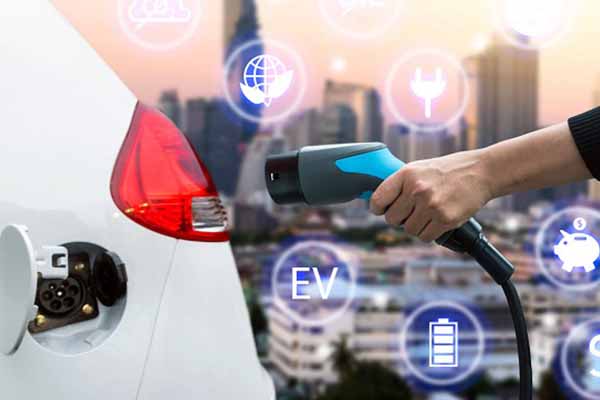The Government of India has taken several steps to promote the adoption of electric vehicles in the country. This includes the formulation of various policies and incentives to stimulate the manufacturing and sales of electric vehicles. At the national level, the Government of India has been promoting the adoption of electric vehicles through various policies, subsidies, and incentives. These policies are being implemented to reduce the overall dependence on fossil fuels, reduce air pollution, and promote the use of renewable energy sources. The Government of India considers EVs to be an important part of its mission to reduce air pollution, promote energy security, and create jobs and economic opportunities. The Government has made a major commitment to increasing the number of EVs on the roads, and its policies are designed to provide incentives to both manufacturers and consumers.
Key Schemes and Subsidies – A Close Watch!
Furthermore; the Government of India has announced several subsidies and exemptions for electric vehicles. This includes exemptions from the road:
1. FAME India Scheme: This scheme was launched by the Ministry of Heavy Industries and Public Enterprises in April 2015. The main objective of this scheme is to promote the adoption of electric and hybrid vehicles in the country. This scheme offers incentives such as subsidies and tax credits to the manufacturers and buyers of electric vehicles.
2. EV Infrastructure Creation: The Indian government has set up the National Electric Mobility Mission Plan (NEMMP), which aims to create the necessary infrastructure for the adoption of electric vehicles. This includes setting up charging stations across the country, as well as providing incentives for the installation of EV charging equipment.
3. EV Promotion Program: This program was launched in March 2021 and is aimed at providing incentives to the manufacturers and buyers of electric vehicles. This program offers incentives on the purchase of electric vehicles, including subsidies and tax credits.
4. National Electric Mobility Mission Plan (NEMMP): The NEMMP was launched in 2013 with the aim of promoting the adoption of electric and hybrid vehicles in India. This plan has set a goal of having 6-7 million electric vehicles in the country by 2020. The plan also provides subsidies and tax credits to manufacturers and buyers of electric vehicles.
5. EV Manufacturing Scheme: This scheme was launched in April 2018 and aims to promote the manufacturing of electric vehicles in India. The scheme provides incentives to the manufacturers of electric vehicles, including subsidies and tax credits. It also provides incentives for the import of electric vehicles and components.
These policies are helping to promote the adoption of electric vehicles in India, and are helping to reduce the overall dependence on fossil fuels. They are also helping to reduce air pollution and promote the use of renewable energy sources. The Indian government is committed to promoting the use of electric vehicles, and these policies are helping to make this a reality.
One of the key policy initiatives has been to make the purchase of EVs more attractive to consumers. This has been achieved through the introduction of lower taxes and subsidies. For example, FAME India, the government’s flagship Electric Vehicle Program, provides subsidies of up to Rs 30,000 on the purchase of EVs. The Government also provides tax incentives, such as a waiver of the registration fee, road tax, and GST for EVs.
These measures help to make EVs more affordable and encourage their uptake. Another key policy initiative is to promote the development of the EV infrastructure. The government has set a target of installing 1.5 million EV charging stations across India by 2030. This will make it easier for drivers to recharge their EVs and will help to increase the range of EVs. The government is also providing financial support for the development of public charging infrastructure.
For example, the Government has launched the FAME India Scheme to provide subsidies for the installation of public charging stations. The government is also encouraging the development of the EV industry in India. This includes providing research and development support, as well as subsidies for the manufacturing of EVs. The government has also launched a number of schemes to support the development of the EV ecosystem.
This includes the National Mission on Electric Mobility, which aims to promote the development of EVs and their components. Finally, the government is encouraging the adoption of EVs by businesses and public institutions. The government has launched a number of schemes to provide incentives to businesses and public institutions which purchase EVs. This includes subsidies of up to 30% of the cost of purchasing EVs.
However, these policies and plans are not without their cons, and it is important to consider the potential risks and drawbacks of the government’s initiatives. While the Government has made some efforts to raise awareness of EVs, there is still much work to be done in terms of educating potential buyers on the benefits of making the switch. Without adequate information, potential buyers may be put off by the perceived risks and drawbacks of EVs, making it difficult for the government to meet its ambitious targets.
The future policy of India on electric vehicles (EVs) is an important consideration for the country’s continued economic growth and sustainability. With the world’s second-largest population and an economy that is growing rapidly, India is in a unique position to make a difference in the global fight against climate change and air pollution. This makes the need for effective policies on EVs even more pressing.
An important policy to consider is the use of fiscal incentives to promote the adoption of electric vehicles. India has already implemented a number of subsidies and incentives, but more needs to be done in order to make EVs more attractive to consumers. This could include tax breaks for those purchasing electric vehicles or subsidies for electric vehicle charging points. These incentives could be targeted toward specific segments of the population, such as those in rural areas or lower-income households. This would help to make EVs more accessible and attractive to a wider range of consumers.
In conclusion, India’s policies on EVs have the potential to make a significant contribution to tackling climate change and reducing emissions. However, the policies are not without their cons, and it is important to consider the potential costs and drawbacks of the initiatives. The cost of EVs, there are a few issues that need to be addressed if India is to successfully meet its targets. In addition, to the solution of these issues, the government has introduced a number of tax incentives for businesses that purchase EVs. This includes a waiver of road tax and registration fees for EVs. Overall, the government of India has taken a number of policy initiatives aimed at promoting the adoption of EVs. These measures help to make EVs more affordable and encourage the development of the EV infrastructure. They also provide incentives to businesses and public institutions which purchase EVs. As a result, the adoption of EVs is likely to continue to grow in India in the coming years. The aim of the scheme is to reduce the upfront cost of electric vehicles and to promote electric mobility in the country.















